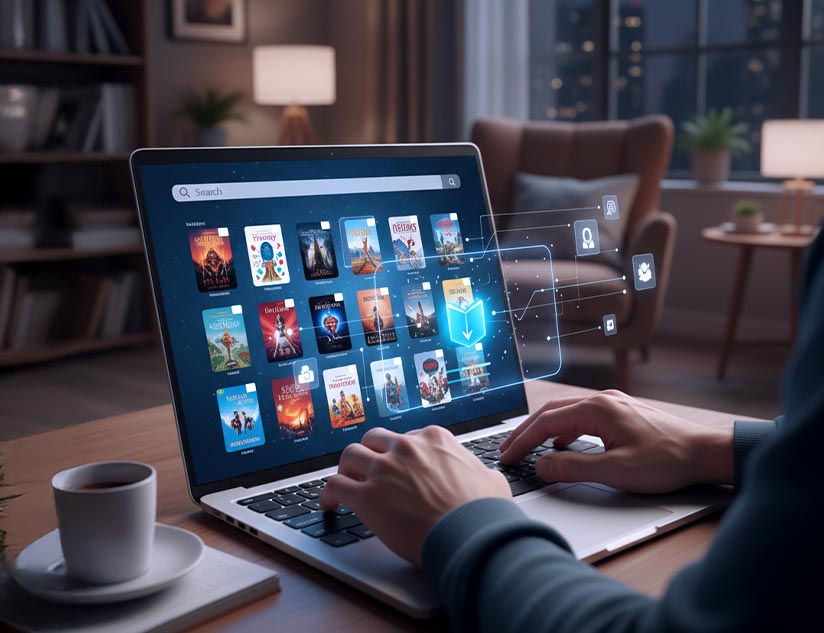
Why K-12 Publishers Need a Digital Library Solution in 2025
The classroom bell rings differently these days. Students pull out Chromebooks instead of heavy backpacks. Teachers navigate between three different platforms just to start a lesson. And K-12 publishers? They’re caught between what they’ve always done and what schools are actually demanding. The transition to digital isn’t some distant horizon anymore, it’s the ground beneath our feet. And the publishers who haven’t invested in a proper digital library solution aren’t just falling behind; they’re becoming invisible to the districts making purchasing decisions right now.
The State Adoption Process Has Completely Changed
State textbook adoptions used to center on one question: is the content aligned to standards? Today, that’s just the entry ticket. The real evaluation happens when adoption committees start asking about integration capabilities, offline access, teacher training requirements, and implementation timelines.
Districts want to know if your digital library solution can handle thousands of simultaneous users during testing windows. They’re asking whether it works with the LMS they spent two years implementing. They need to understand how substitute teachers will access materials without a PhD in educational technology.
Publishers showing up with printed samples and a basic ebook viewer are watching contracts go to competitors who brought a complete digital ecosystem. The textbook business has transformed into the educational technology business, whether traditional publishers are ready for that reality or not.
Teachers Are Drowning in Platform Fatigue
Walk into any K-12 classroom and ask a teacher how many different systems they log into daily. The answer will depress you. Reading program on one platform. Math curriculum on another. Assessment tools scattered across three more. Each with different passwords, different interfaces, different student roster management.
This is where a comprehensive digital library solution becomes a lifeline rather than another burden. When publishers can consolidate content, assessments, and resources into a single access point that integrates with existing school systems, they’re solving a problem that keeps principals awake at night. Teachers don’t want your content if accessing it means adding another login to their already-overflowing mental load.
The winning move? A digital library solution that disappears into the teacher’s workflow instead of disrupting it. Single sign-on isn’t a luxury feature anymore, it’s the difference between adoption and abandonment.
The Parental Access Conversation Is Unavoidable
Something’s shifted in the past few years. Parents want visibility into what their children are learning, and they want it now, not at parent-teacher conferences twice a year. They’re asking schools for access to curriculum materials. They want to see assignments, help with homework, and understand the progression of skills their child is supposed to master.
K-12 publishers who thought their only customers were schools and teachers are discovering a third stakeholder who can make or break adoption decisions. A digital library solution that only works within school walls is missing half the equation. Parents need access too, but not the same access as teachers. They need age-appropriate controls, clear navigation, and interfaces that don’t require training.
Districts are choosing publishers who understand this triangle of student, teacher, and parent access. Your digital library solutions need to serve all three, with appropriate permissions and interfaces for each role.
Content Updates Can’t Take Six Months Anymore
The world doesn’t wait for publication cycles. Current events become outdated overnight. Scientific discoveries reshape understanding. Social studies content that seemed fine last year suddenly needs nuancing. And K-12 teachers are expected to keep instruction current, relevant, and engaging.
Traditional publishing timelines are incompatible with modern education. When it takes half a year to update a chapter, you’re not publishing textbooks, you’re documenting history. Districts need partners who can push content updates in weeks, not semesters.
A robust digital library solution gives publishers the ability to revise, enhance, and refresh content continuously. This isn’t just about corrections; it’s about maintaining relevance in a world where students can Google any topic and find information newer than what’s in their assigned textbook. Publishers who can’t keep pace are training students to trust other sources more than official curriculum materials.
The Differentiation Mandate Is Non-Negotiable
Every K-12 classroom includes students reading at different levels, processing information in different ways, and needing different amounts of support to master the same standard. Teachers are required to differentiate instruction but they can’t do it if the materials don’t allow flexibility.
A static textbook gives everyone the same experience regardless of need. A sophisticated digital library solution provides multiple pathways through the same content. Some students need audio support to access grade-level text. Others need vocabulary scaffolding. Some benefit from video demonstrations while others need hands-on simulations.
Publishers who build this flexibility into their digital library solutions aren’t just meeting accessibility requirements, they’re solving the biggest instructional challenge teachers face. When your content can adapt to diverse learners, you become indispensable rather than interchangeable.
Device Diversity Is a Feature, Not a Problem
K-12 schools don’t have uniform technology ecosystems. One district is all-in on iPads. Another committed to Chromebooks. A third has a mix of devices that would give IT directors nightmares. Students access materials on school computers, personal tablets, and smartphones.
Publishers who built their digital library solutions for a single platform are discovering that schools won’t change their technology infrastructure to match your software requirements. It works the other way around. Your solution needs to perform seamlessly across iOS, Android, Windows, and web browsers with offline capabilities for students in rural areas where connectivity is inconsistent.
The Security Question Isn’t Going Away
School boards and superintendents are increasingly concerned about data privacy, content security, and compliance with regulations that seem to multiply annually. They need to know that student information is protected, content access is controlled, and your digital library solution meets all state and federal requirements.
This isn’t about adding security features as an afterthought. It’s about building privacy and protection into the foundation of your digital library solutions. Districts are eliminating vendors who can’t demonstrate compliance, regardless of how good the content might be.
Moving Forward
The K-12 publishing landscape has fundamentally transformed. Success isn’t about having the best content anymore, it’s about delivering that content through a digital library solution that serves teachers, students, parents, and administrators simultaneously. Publishers still treating digital as a side project rather than the core business are watching market share evaporate to competitors who understood this shift years ago.
The question isn’t whether you need comprehensive digital library solutions. The question is whether you’re building one that actually solves the problems schools are facing right now.
Source link




